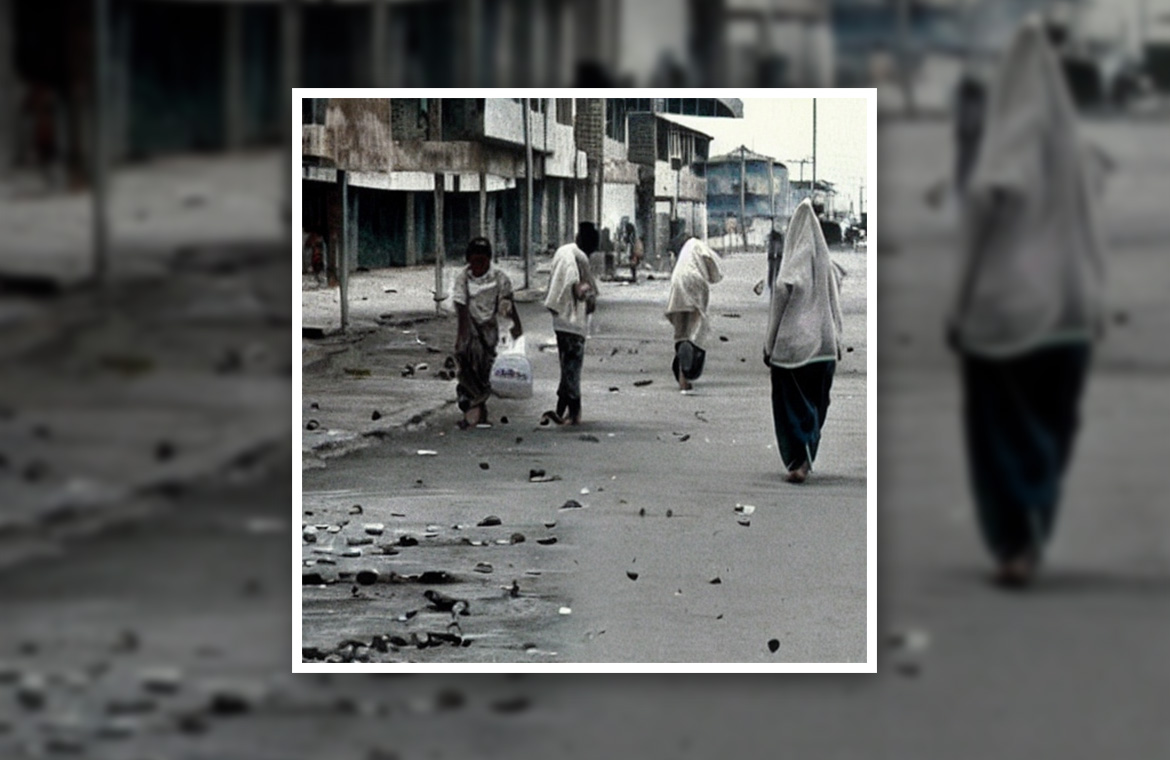(We read history not only to pay tribute to the great persons from the past but also to know the mistakes done in the past and learn from them not to repeat at least the same mistakes)
1994. A suspected outbreak of plague cases was reported from Surat. At that time, I was posted as a young Associate Professor in Community Medicine (with only a year of seniority) at the Government Medical College – the one and only Medical College in Surat and across the entire South Gujarat comprising of 7 districts. I was a part of the team working at hospital – the only hospital admitting those cases for the entire duration. PSM people are handpicked for such jobs mainly due to their deftness with numbers. During any disaster, regular submission of reports with numerical evidence for representation to higher ups is important.
The cases were reported and diagnosed as ‘Plague’, by a senior physician. At that time, Surat was one of the most congested and dirtiest cities in India and was experiencing heavy rainfall for over a week. Flood water entered in the burrows on the bank of Tapi river bringing out the rats and causing a moderate degree of rat fall. Against this context, the diagnosis was accepted by the people, spreading panic like wild fire, across all sectors- from common people to top administrators and technocrats. Panic stemmed from the fact that the doctors providing treatment, have not, in their entire carrier were yet to see or treat a case of Plague. Everyone fell back on lay references/ distant memories of the previous outbreak of this fearsome and dreaded disease reported in India during 1895 – 1910. That was the time when medical facilities were very limited and scattered, antibiotics were not available and preventive services were non-existent. Together with Cholera, it used to invoke fear and urge people to run away from the place as fast as one can.
I remember having seen a movie of 1968, “PHOOL AUR PATHAR” (starring Dharmendra & Meena Kumari) which had a passing reference of Plague, wherein, after hearing about plague every one left the village abandoning Meena Kumari, a widow who met Dharmendra and then, the love story blossomed.
Against this backdrop, panic was the only probable response and panic struck the city. No one took stock, that this is not 1910 but 1994, when we have plenty of antibiotics that are effective against the Plague bacilli. With a few thousands of admissions and around 50 deaths, the outbreak was brought under control, in less than a month. The State government acted promptly, airdropped several administrators, medics/ paramedics, provided all help, removed huge amount of garbage. As a result, after the outbreak, the city got transformed from one of the dirtiest cities of India to the second cleanest city that too in a row for several years and the administrator of the city received the Padma award, in recognition of his efforts.
In hindsight however, it appeared that several decisions taken at that time could have been avoided or modified to mitigate the havoc and reduce the sufferings of the people.
- Think Twice before Labelling: Labelling the outbreak as Plague caused immense damage in terms of economy and the social fabric. USA and other European countries stopped the exports from Surat (Till date I wonder how the exported sarees or diamonds can be a forerunner of Plague!!). Even a conservative estimate pegs this loss at Rs 10, 000 Crores! About 20 percent people of the city including many private practitioners migrated out from the city. Furthermore, wherever these migrants went, they received harsh treatment! Before this, Surtis were always welcomed at Daman (a UT at 120 km distance) for their love for liquor, good paying capacity and non-hassling nature. But now, they were simply not allowed to enter, during the Plague time! A little foresight leading to naming the outbreak with some less dreaded terminology could have contained the brewing of panic and avoided the uncalled for social and economic implications. It is also a fact that till date, several scientists refuse to confirm the outbreak, as Plague.
- Closure of the Medical college: A decision taken at the highest level of bureaucracy for converting the entire hospital into Plague ward, led to closure of medical college and its hospital for general services, thereby paralysing of the health care system. Let me remind you here that in those days, there were no corporate or big hospitals or private medical colleges, and with some 25 – 30% private doctors already having moved out; it was only medical college in entire South Gujarat. The next nearest one was at Vadodara (150 km). There was utter disregard of questions like where will the deliveries be conducted, where will the surgeries be done, where will routine cases of hypertension, diabetes or serious cases like malignancies be treated or referred to? Technocrats should have strongly advocated a representation to the higher levels to stop the closure of the medical college. It may sound funny but Commandos from RAF were deployed around the hospital so the patients do not run away from the hospital. One can imagine that how this had added to the panic of the relatives of those who were admitted (in the pre-cell phone era).The point I want to stress upon is that it was a disease which affected thousands and caused around 50 deaths. The survival was good and there were no long-term complication or disability. The organism was detected easily and it responded well to the available antibiotics (tetracycline). This outbreak could have been managed with ease and grace and with less hype and panic. Many more patients of COVID 19 have been treated all over the world including India with minimal interruption of the routine services. Yes, it is far easy to say such things in retrospect. But that is the purpose of revisiting history to learn from the mistakes and avoid repeating them in future.





A great read!
Good not only Retrospective but also INTROSPECTIVE STUDY
You are right sir
It is introspection which is needed